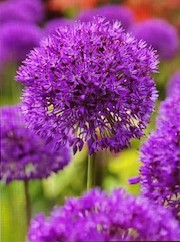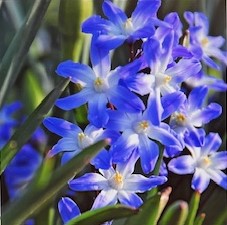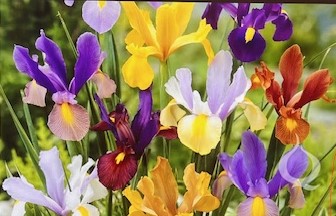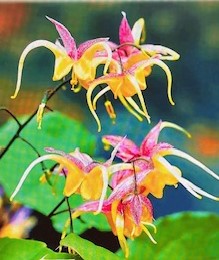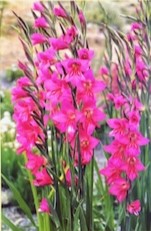We had a feast for the eyes at our Zoom meeting last night. Joan had many gorgeous photos of her suggestions for deer resistant and drought tolerant plants. She began her talk with this warning: Although ‘deer resistant’ doesn’t necessarily mean deer proof…ever…if your plants have a fuzzy texture, sharp thorny foliage or are highly aromatic, they likely won’t be attractive to deer.
Here is a list of plants, along with a few notes, that Joan recommends for your garden.
• Allium: These are amazing plants that have tough constitutions. They thrive in almost any well-drained soil. They multiply, come in a broad palette of colours, heights and forms. They also make excellent cut flowers with strong stems. They are very drought tolerant (prefer dry soil) and no have serious diseases or pests that bother them. A great butterfly and pollinator flower.
• Snowdrop: Snowdrops are very happy in the shade, unlike most bulbs which prefer full sun.
• Botanical or Species Tulip: While deer love the modern, hybrid tulips, Species (or Botanical) tulips are much less attractive to them. And they also naturalize, unlike ‘normal’ tulips. They are smaller and have a longer bloom time.
• Fritillaria: Reliable rebloomers and they have a smell, which Joan thinks deter the deer.
• Narcissus (Daffodil): Many ‘fancy’ varieties some of which are double blooms. Pretty but not that pollinator friendly.
• Iris reticulata: Late winter bloomer, fragrant, pollinator friendly and naturalizes well.
• Iris x hollandica (Dutch Iris): Good cut flower, blooms in May, naturalizes.
• Iris pumila (Dwarf Bearded): May blooms about 12” tall.
• Iris siberica (Siberian Iris): Extremely drought tolerant, good cut flowers.
• Hyacinth: Very fragrant, forces well but must undergo a period of cold stratification.
• Muscari latifolium (Grape Hyacinth): Naturalizes well.
• Scilla (Squill): Beautiful in swaths.
• Chionodoxa forbesii (Glory of the Snow): Has naturalized in many places in the Valley.
• Camassia (Camas): PNW native very prominent in First Nations culture.
• Anemone: Some corms produce up to 30 blooms per season. Industry leaders describe them as the ‘workhorse of the garden’.
• Epimedium hubridium: A ‘bullet proof’ plant that thrives in dry shade. Flowers are very delicate-looking. Joan recommends cutting back last year’s foliage when plant is in bloom so flowers can be seen.
• Gladiolus communis subsp. Byzantinus (Byzantine gladiolus): Hardier but less showy than hybrid gladiolas. Blooms in May.
• Eremurus ruiter (Foxtail Lily): Although these are perennials, sometimes they are short lived.
Some photos are below–many more were shared with us—it was a lovely presentation. Thanks so much Joan!
Note: Joan will be attending Comox Valley’s Seedy Saturday on March 2, 2024 and will have many of these plants for sale through her business Gardenlore https://gardenlore.ca/
